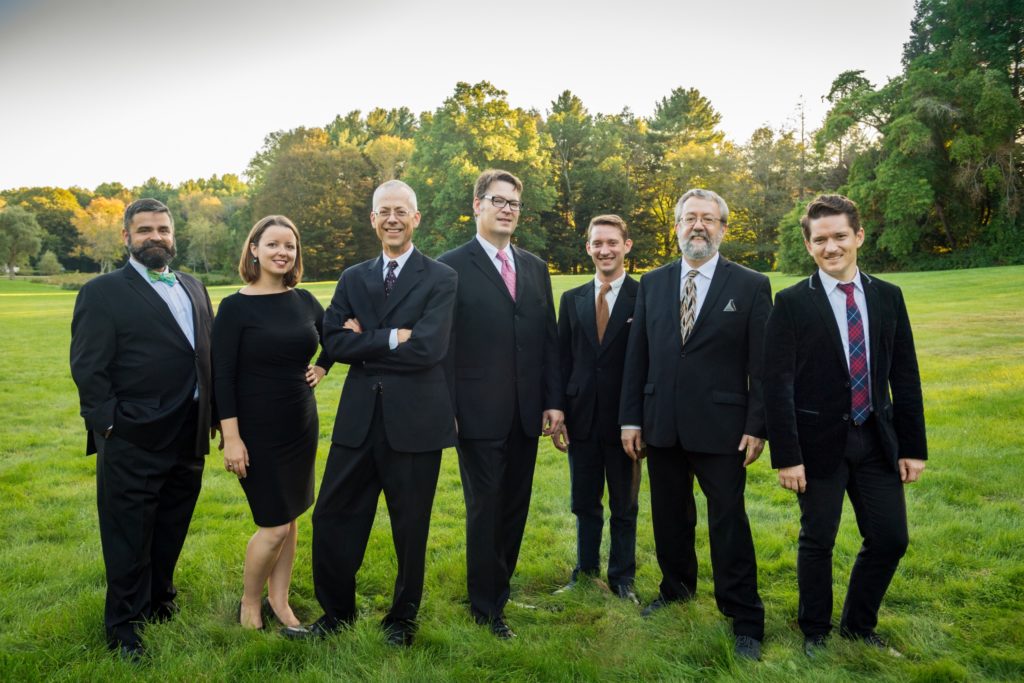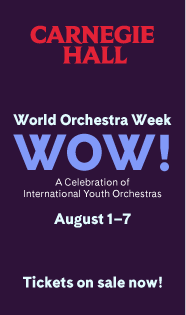Blue Heron masterfully sings of sacred love in Petrarch program
You know you’ve achieved a certain standing in the concert world when you can announce a program of composers hardly anyone has heard of and still pack the house.
That happened Sunday afternoon at Corpus Christi Church in Morningside Heights, as Music Before 1800 presented a local favorite, the Boston-based vocal ensemble Blue Heron, in a concert of 16th-century madrigals by ten composers, among whom the biggest “names” were Adrian Willaert and…well, that’s about it.
Actually, the most famous name in the program was not a composer but a poet: Petrarch, the influential 14th-century sonneteer whose collection of love poems titled Canzoniere, published in a pocket edition that became known as a petrarchino, was one of the first bestsellers of the movable-type era, and the source of all the texts in Sunday’s concert.
Animated by visceral emotions but elevated in tone and imagery, Petrarch’s verse occupied a sort of middle ground between sacred texts on one hand and light love lyrics on the other. They were rarely set to music at first, and when someone finally did so, it was “serious” contrapuntal composers from northern Europe such as Willaert, Jacques Arcadelt, and Giaches de Wert. Italians such as Costanzo Festa and Matteo Rampollini took up the style, followed later by Cipriano de Rore and Luca Marenzio. (Alas, yesterday’s all-star team is today’s footnote.)
Six singers of Blue Heron—mezzo-sopranos Sophie Michaux and Kim Leeds, tenors Jason McStoots and Aaron Sheehan, baritone Sumner Thompson and bass-baritone Paul Guttry, self-conducted but prepared by the group’s director, Scott Metcalfe–grouped four or five to a song, used their matchless resources of vocal color, intonation and phrasing to shine a light into this obscure corner of music history, the ground from which the flashier madrigals of Monteverdi and Gesualdo would later spring.
It would take an ear more experienced in this repertoire than this writer’s to describe the individual characteristics of each composer’s style, especially since the poet’s text often dictated the tone of the setting. One was aware, however, of the stylistic crosscurrents of the period, the tension between the “recitative” style of text set simply in flowing chords—gorgeously tuned by Sunday’s singers–and a tendency to break free in florid counterpoint.
In “Solo et pensioso,” for example, the only Petrarch text set by two composers on this program, the poet’s thoughtful solitude seemed to dictate the smooth setting by Arcadelt. Two generations later, Marenzio brought out the poem’s inner turmoil with agitated counterpoint that continued softly in the last stanza, even as the poet praised the comforts of love.
Some writers of the time commented disapprovingly on a trend in madrigals to emphasize sensuality of tone over the intellectual virtues of counterpoint. (Think Rachmaninoff versus Schoenberg, circa 1920.) On Sunday, it was hard to agree with them, when a piece like Willaert’s “Quante volte diss’ io” (How often did I say) offered its rich blend of three male voices with mezzo Michaux’s creamy tone on top.
On the other hand, ensembles topped by the agile, flute-like voice of Leeds often ventured into intricate voice-leading and melisma, as in Francesco de Layolle’s “Lasciar’ il velo” (Put aside your veil).
These works offered few easy handles such as catchy dance rhythms or picturesque text-setting. Even dramatic gestures, such as the sudden forte on “Madonna è morta” (My lady is dead) in Rampollini’s “Che debb’ io far?” (What should I do?) were few and far between. The music’s interest lay in the interplay of voices and the often venturesome triadic harmonies, expertly realized by the Blue Heron singers.
In a program that hopscotched among composers and decades, the main organizing principle was the expressive arc of Petrarch’s Canzoniere itself, from the early poems of love at first sight for his muse Laura, to his desolation at her death (“Oimè ‘l bel viso,” Alas the beautiful face, movingly set here by Leonardus Barré) to his appeal to the Virgin Mary (in the long poem “Vergine bella”) to bless him at the hour of his own death.
Although the customary texts and translations were provided, the import of Petrarch’s words was reinforced by reading them from the stage in English and/or Italian before each piece. While English reader Jade Guerra’s rather neutral delivery tended to let the poems speak for themselves, Alessandro Quarta’s Italian renditions ranged widely in tone, murmuring tenderly before Arcadelt’s “Chiare fresche et dolci acque” (Clear, cool and sweet waters) and rising to an anguished shout to launch Festa’s “Datemi pace, o duri miei pensieri!” (Give me peace, oh cruel thoughts of mine!).
Petrarch the political animal peeked into the scene with Philippe Verdelot’s “Italia mia,” a hymn-like plea for peace amid the dynastic wars of the poet’s time. An excerpt of Rore’s prayerful setting of “Vergine bella” closed the program. For most of the concert, however, one found oneself imagining a gathering of Renaissance men and women to savor the nuanced poetry and music of love.
Music Before 1800 presents Capella Pratensis, directed by Stratton Bull, in a program commemorating the 500th anniversaries of the deaths of Josquin des Prez and Jean Mouton, 4 p.m. April 16 at Corpus Christi Church, 529 W. 121st Street, Manhattan. mb1800.com.

